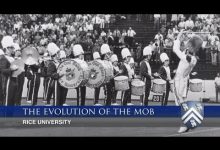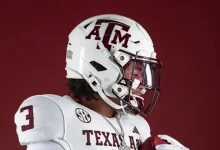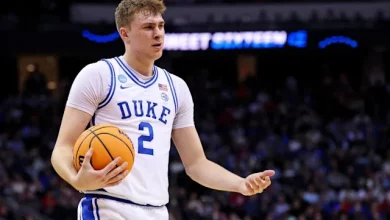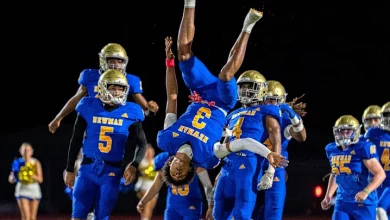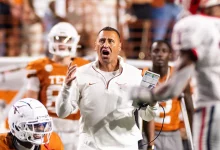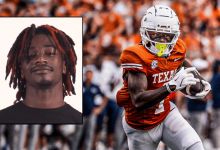Oklahoma Sooners fans might be concerned about recent struggles in defensive tackle recruiting, potentially impacting the team’s future depth and performance on the defensive line.
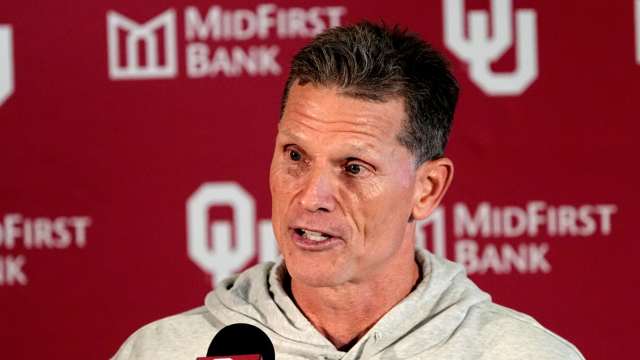
The Oklahoma Sooners football program, known for its storied history of success, has long been recognized for its strong recruiting efforts, especially on the defensive front. However, recent seasons have raised concerns among fans and analysts regarding the team’s ability to attract top-tier defensive tackle prospects. As the landscape of college football continues to evolve—with increased competition, changing recruiting strategies, and the importance of defensive line dominance—fans are rightly questioning whether the current recruiting trajectory could hinder the Sooners’ future competitiveness.
This comprehensive analysis will examine the historical context of Oklahoma’s recruiting success in the defensive line, analyze recent recruiting trends and challenges, evaluate the impact of these trends on team performance, and consider potential solutions and future outlooks. Ultimately, this discussion aims to determine whether Oklahoma fans should be genuinely worried about the program’s defensive tackle recruiting and what that might mean for the team’s future.
Historical Context: Oklahoma’s Defensive Line Legacy
Oklahoma has traditionally been a powerhouse in college football, with a reputation for producing NFL-caliber talent along the defensive front. Legendary players such as Tommie Harris, Dusty Dvoracek, and Gerald McCoy exemplify the program’s past success in recruiting and developing dominant defensive tackles. This tradition created a recruiting environment where the Sooners regularly landed highly ranked prospects, contributing to national championship runs and sustained success.
The program’s coaching staff historically prioritized interior defensive line talent, recognizing that controlling the line of scrimmage is critical for both defending the run and pressuring the quarterback. These recruiting efforts, combined with excellent player development, helped Oklahoma maintain a reputation as a defensive line factory.
Recent Recruiting Trends and Challenges
In recent years, however, Oklahoma has faced challenges in attracting top defensive tackle prospects. Several factors have contributed to this trend:
Increased Competition
The landscape of college football recruiting has intensified, with programs like Alabama, Georgia, Clemson, LSU, and Ohio State investing heavily in defensive line talent. These programs often secure top-ranked recruits with lucrative NIL deals, prominent national exposure, and established pipelines.
NIL and Transfer Portal Dynamics
The advent of Name, Image, and Likeness (NIL) opportunities and the transfer portal has reshaped recruiting. Some programs offer more immediate NIL benefits or transfer opportunities to attract prospects, which can sometimes make it challenging for Oklahoma to compete for the same elite talent.
Changing Perceptions and Regional Dynamics
Oklahoma’s traditional recruiting regions—Texas, Oklahoma, and surrounding states—have become increasingly competitive, with many programs expanding their reach and influence. Additionally, some top prospects might prioritize programs with more recent defensive success or perceived higher ceilings for NFL development.
Coaching and Scheme Adjustments
Changes in coaching staff and defensive schemes may influence recruiting priorities. If Oklahoma shifts to a scheme less reliant on interior pass rush or run-stuffers, it could impact the attractiveness of their defensive tackle spots for prospects.
Recruiting Rankings and Commitments
Over the past few recruiting cycles, Oklahoma has sometimes secured commitments from prospects ranked lower than in previous years. While rankings are not everything, they do influence perception and can impact the overall quality of the roster.
For example, while Oklahoma has signed several talented defensive tackles recently, they haven’t consistently landed the five-star prospects that historically bolstered their defensive line units. This trend raises questions about whether the program is losing ground in attracting elite interior linemen.
Impact on the Team’s Performance and Future
The significance of defensive tackle recruiting struggles extends beyond just high school rankings. The impact on team performance and future prospects can be substantial:
Depth and Rotation Challenges
A lack of top-tier recruits can lead to thinner depth along the interior defensive line. This may force Oklahoma to rely on underclassmen or less-developed players, increasing the risk of fatigue, missed assignments, and performance dips, especially late in games or during critical moments.
Run Defense and Pass Rush
Elite defensive tackles are crucial for controlling the line of scrimmage, stopping the run, and collapsing the pocket from the interior. Without high-level talent, Oklahoma’s run defense could suffer, leading to more yards allowed and scoring opportunities for opponents.
Long-Term Development and NFL Pipeline
Consistently recruiting top-tier interior linemen helps establish a pipeline for future NFL talent. Falling behind in this area may impact Oklahoma’s reputation and ability to develop players into professional prospects.
Defensive Scheme Effectiveness
Oklahoma’s defensive scheme often relies on disruptive interior linemen to generate pressure and clog running lanes. A less talented group could limit the scheme’s effectiveness, forcing the team to rely more on blitzes and external pass rushers, which can be riskier.
Recruiting Ripple Effect
Success in recruiting high-caliber defensive tackles often attracts other top prospects, creating a positive recruiting cycle. Conversely, struggles in this area could hinder overall recruiting momentum.
Is Oklahoma Fans’ Concern Warranted?
Given these factors, should Oklahoma fans be worried? The answer is nuanced:
Yes, if the trend continues: A sustained inability to land top defensive tackles could compromise the team’s defensive identity and competitiveness. Without elite interior players, the team might struggle against high-caliber offenses, particularly those with dominant rushing attacks and mobile quarterbacks.
No, if development and scheme compensate: Football is a team sport, and talented coaching can sometimes mitigate recruiting gaps. Oklahoma has a track record of developing under-the-radar prospects into impactful players and adapting schemes to maximize existing talent.
Consider recent recruiting successes: Despite challenges, Oklahoma has still managed to land solid defensive linemen, including some highly rated prospects. The program’s overall defensive performance, coaching staff, and player development remain strong points.
Potential for future improvement: Oklahoma’s recruiting infrastructure, coaching staff, and regional ties still position it well to rebound. The program’s reputation and history of success often attract top talent, especially if the team performs well on the field.
Factors That Could Reverse the Trend
To address recruiting concerns, Oklahoma can pursue several strategies:
Enhance NIL Partnerships
Building stronger NIL programs that attract top prospects can make Oklahoma more competitive.
Expand Recruiting Regions
Looking beyond traditional areas and targeting under-recruited regions or national prospects can diversify the talent pool.
Invest in Player Development
Improving coaching and development can turn mid-tier recruits into impactful players, mitigating some recruiting shortcomings.
Leverage Transfer Portal
Bringing in experienced transfers, especially from the portal, can fill immediate needs at defensive tackle.
Brand Reinforcement and Success on the Field
Consistent winning and high-profile wins attract top recruits. Maintaining a competitive team with visible success can help Oklahoma regain its recruiting edge.
Future Outlook: What Should Fans Expect?
While recent struggles in defensive tackle recruiting are a concern, they are not necessarily catastrophic if addressed proactively. Oklahoma’s historical strength, combined with strategic adjustments, can help the team maintain competitiveness. However, neglecting this area could lead to long-term vulnerabilities.
Fans should monitor recruiting classes, coaching staff adjustments, and team performance over the next few seasons. If the program can reverse the trend and consistently land high-impact interior linemen, concerns will diminish. Conversely, continued struggles may require fans to temper expectations and recognize the importance of player development and scheme adaptation.
In summary, Oklahoma Sooners fans have legitimate reasons to be concerned about recent defensive tackle recruiting trends. The strength of a football program often hinges on the quality of its line of scrimmage, and interior defensive linemen are pivotal to defensive success. While Oklahoma remains a historic power with resources and reputation, the increasing competition, NIL dynamics, and recruiting landscape pose challenges.
However, these concerns are not insurmountable. Strategic recruiting, player development, and scheme adjustments can mitigate potential deficits. Fans should remain engaged and optimistic but also realistic about the importance of addressing this recruiting gap.
Ultimately, whether Oklahoma can maintain its defensive dominance will depend on its ability to adapt to modern recruiting realities and continue developing talent from within. The program’s future remains bright if it can successfully navigate these challenges, but vigilance and proactive strategies are essential.

